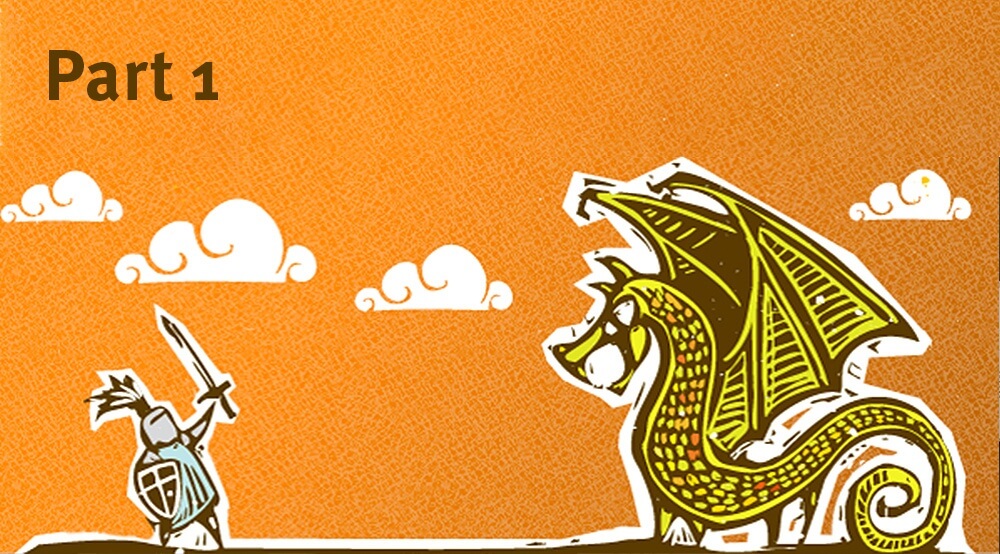It’s a tale as old as time.
David & Goliath. St. George & The Dragon. Smokey & The Bandit.
The Challenger Brand & The Market Leader.
To succeed as a Challenger Brand means having to do more with less. You need to be smarter, more creative, more agile and more ambitious. For an agency as much as for the client, it is one of the greatest opportunities in marketing.
Yield’s success with Challenger Brands – and as a Challenger Agency ourselves – has helped us uncover a distinct set of best practices that are common to many of these challenger scenarios. Understanding their significance, and tailoring your approach to best take advantage of your position as a challenger, is crucial to your success. This article covers the fundamental first three: Establish a distinctive point of difference. Find the white space. Take educated risks.

1. Establish a distinctive point of difference.
A Challenger Brand must start from the assumption that they can never beat the market leader at their own game. It would be foolish to even try. Instead, a challenger needs to create a clearly-understood positioning that answers a need the market leader cannot. They fill the gap created by the public’s preconceived notion of the market leader’s greatest weakness.
- WestJet stands for customer service in an airline industry plagued by poor traveler experiences.
- Harvey’s lets you top your hamburger how you like, making it “a beautiful thing”, not just one of billions of identical Big Macs.
- Cavendish Farms promises 100% local source PEI potatoes against a competitor so huge it must source from across Canada.
You can’t beat them at what they do. Find something you can beat them at that they just can’t do.

2. Find the white space.
This is the same idea, just backwards. Rather than start with a point of difference you already own and your competitor can’t compete with, try looking at where you could make an operational change that would CREATE this advantage.
The “white space” is that area of opportunity that exists slightly outside a company’s core to reach an entirely new customer, or serve current customers in a significantly new way with the potential to create an entirely new market or radically transform the existing one. Expanding into the white space often means structuring your organization in a radical new way, with a different profit model and different expertise. The fundamental advantage is that neither you nor your market-leading competitor is there yet. And it may be easier for the smaller, less-entrenched Challenger Brand to move in a new, more fertile direction.
The most overwhelming example of this, of course, is Apple. They are no longer a computer company. Trying to be a better computer company than their competitors only got them so far. But creating the iTunes store has made them the world’s largest music retailer. That was not the business they were in. Developing the iPhone has given them the single most successful cellular handset, and now represents 58% of their business. That was not the business they were in. Developing the iPad has redefined (arguably created) the tablet market, and now makes up 17% of their revenue. That was not a business anyone was in. (Data: The Atlantic, April 24, 2012.)

3. Take educated risks.
Roy Williams put it the most succinctly: What you are doing now is creating the results you are seeing now. If you want to see different results, you need to do something differently.
To challenge Goliath, you need to do something different from what you’re doing now and different from what Goliath is doing. And what Goliath is doing, by definition, seems to be working. You need to take a chance on something neither of you have done. Something riskier.
But all risks are not created equal. Research can change the balance. Consumer research, stakeholder insights, competitive analysis and trend data can begin to fill in the gap you need to leap across. Ask a series of questions you CAN answer, and you get closer to developing a confident answer to the questions you can’t. Understanding the way your consumer sees your brand, the way the market is evolving, the way others have handled similar challenges, and the shortcomings of your current approach can start to build a framework within which a radical action makes sense.
Finally, get comfortable with being uncomfortable. Understand and accept that some form of risk is your only option. You will have to make decisions before you are completely sure. The risk remains because absolute results are impossible to guarantee. The only results you CAN guarantee the ones you are seeing now are guaranteed to leave you where you are.
Next time, three more insights into the best practices of successful Challenger Brands: Narrow your target. Find channels you can own. Be disruptive.






